Growing produce without daylight - by using sophisticated LED grow lights and artificial intelligence. This is what GrowWise, part of Signify, does at the High Tech Campus in Eindhoven. Vertical farming opens up new opportunities for producing food with artificial light.
Shiny red tomatoes from the greenhouse, carefully packed in a bright green cardboard box. They look tempting, but do they also taste good?
For consumers, retailers and growers, how fruit and vegetables taste is more important than ever. So Charlotte Pijnenburg, a plant specialist at Philips Signify (formerly Philips Lighting), decided to conduct research into the factors that give tomatoes their taste. The tomatoes in her study were exclusively grown with light provided by LED grow lights, in an enclosed and closely controlled environment. Tomatoes that ripen without sunlight, thanks to a sophisticated mix of artificial lighting, the right climate conditions and carefully chosen nutrients.
In her research, Pijnenburg was able to show that these tomatoes tasted just as good as commercially grown tomatoes. Thanks to optimum climate conditions, but also thanks to the light spectrum, which was precisely engineered to get the best results with tomatoes. Because the whole point of the exercise was to cultivate tomatoes entirely without natural sunlight.
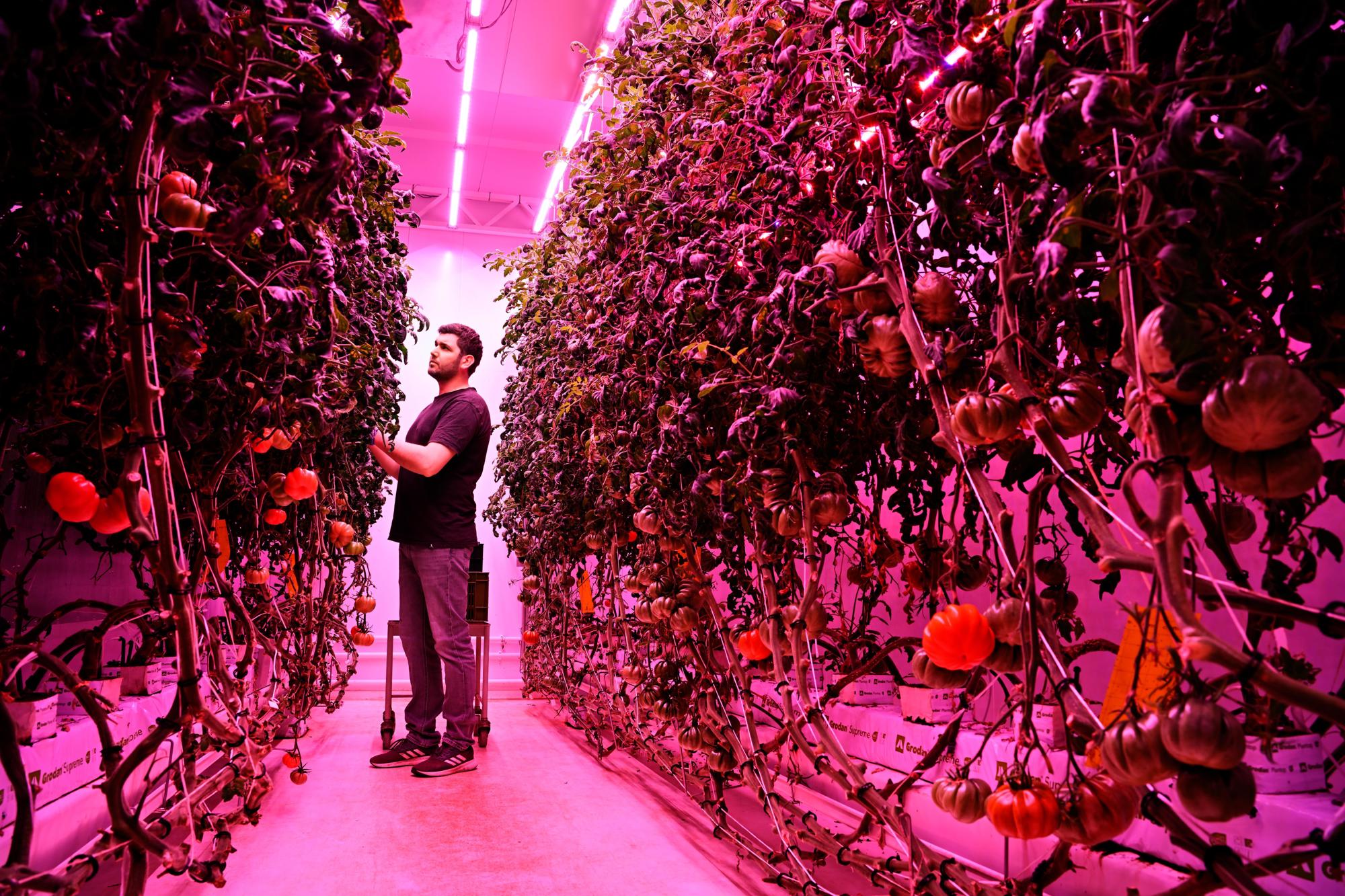
The Philips GrowWise Research Center, which is part of Signify, is currently experimenting with growing crops under LED light. Not out in the countryside at a farm, but at Eindhoven High Tech Campus, in a number of daylight-free rooms.
Because of the controlled environment and the use of LED light, the weather, climate and soil quality are no longer important for a good harvest. The ideal growing conditions for the plants are created in a closed chamber.
This approach offers significant advantages. Pesticides, for example, are no longer needed and the risk of plant disease is greatly reduced. Furthermore, the growth process can also be controlled to give rucola plants and other vegetables a considerably higher vitamin content, or to achieve a longer shelf life. A win-win situation for everybody; contented plants, happy growers, and satisfied consumers.
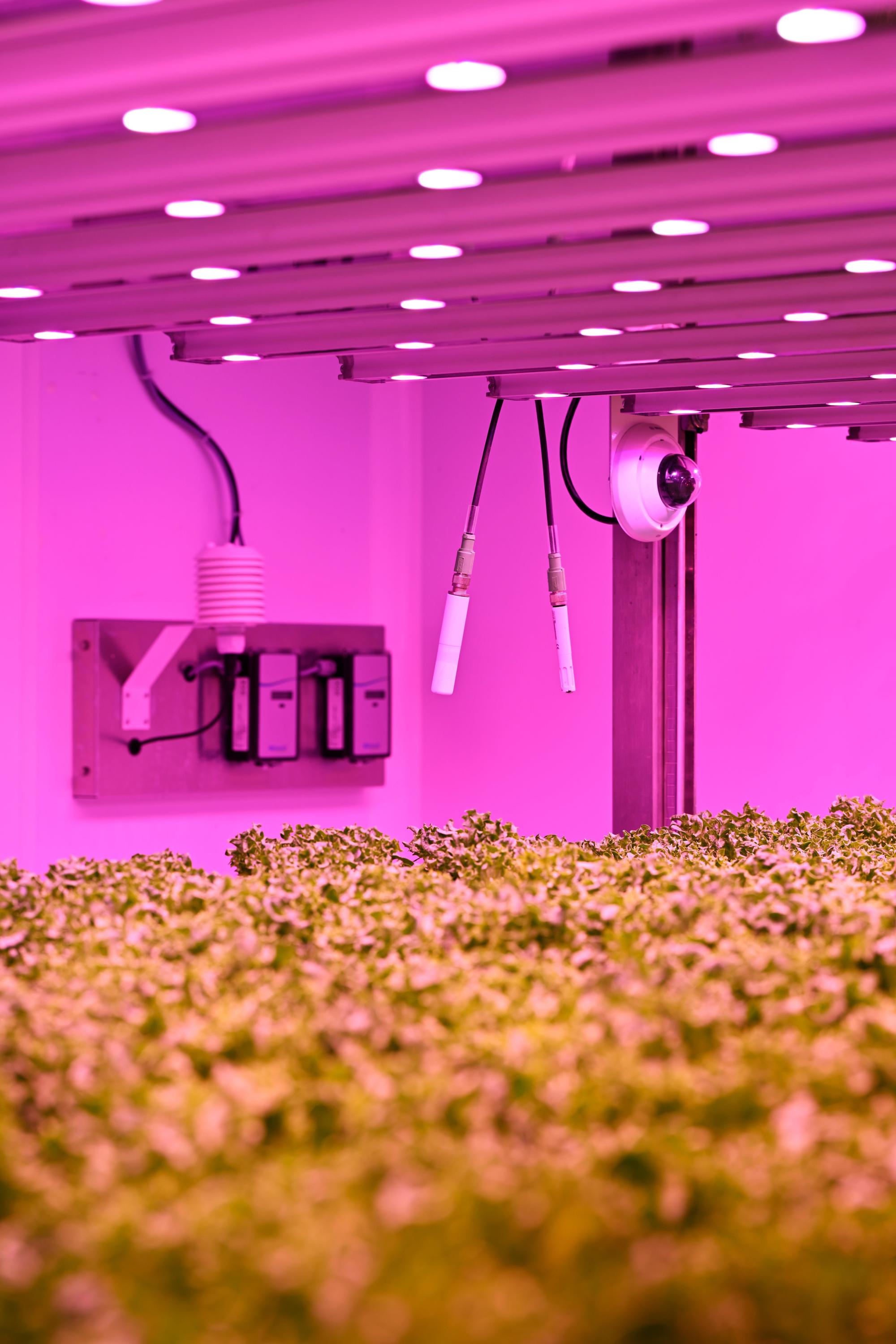
Brabant not only has an extensive agricultural sector, it is also home to the High Tech Campus and Eindhoven University of Technology - known as the smartest square kilometre in Europe. So the presence of GrowWise Research Center at this fertile location is hardly surprising.
GrowWise Research Center conducts research into vertical agriculture: climate chambers that provide the ideal conditions for growing crops and preparing them for harvest. Signify has been involved in horticultural lighting since 1936. Their research into the ideal conditions for growing crops led to the creation of GrowWise a few years ago.
Urban agriculture, also known as city farming and vertical farming, is ideal for rooting young plants, growing leafy vegetables and herbs. "Vertical farms let us perform large-scale tests to determine the right conditions, without using an extensive acreage, so that we can then put this knowledge to good use on behalf of our customers", says Ellis Janssen, Global Director City Farming at Signify.
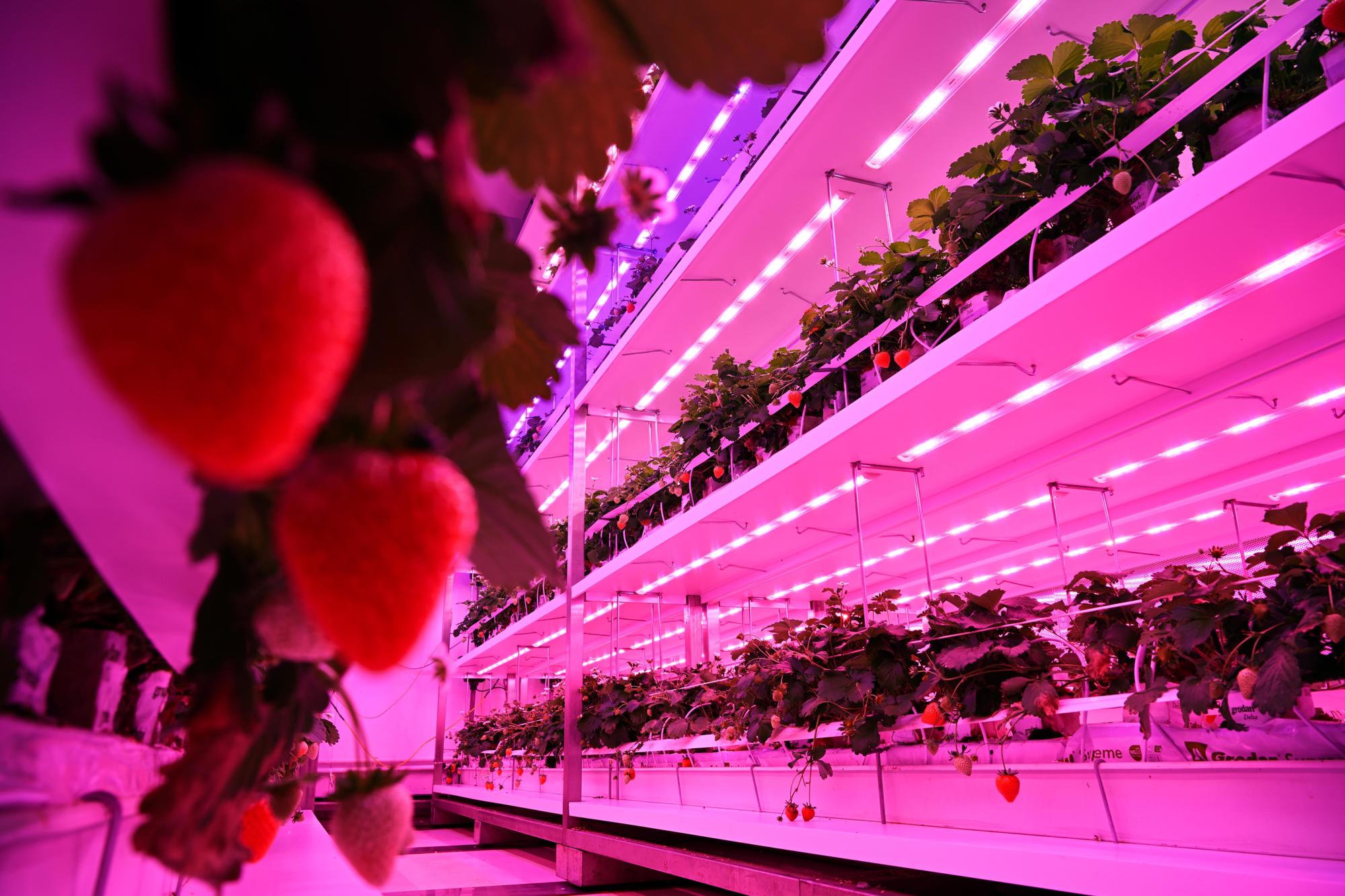
In the Netherlands, urban agriculture, or city farming, is not intended to replace 'traditional' cultivation. Setting up a vertical farm in an area where there are already many greenhouses or fields, for example, is not very profitable.
However, this cultivation method can be a worthwhile addition to the existing lines of supply. This applies particularly to cities where there is high demand for fresh produce but where little food is grown as yet, for example in Asia or the United States.
Moreover, now that the coronavirus crisis has shown just how vulnerable their existing lines of supply are, many countries have set up programmes to stimulate local food production. The demand for safer and more stable food is increasing. “In Asia or the United States, vertical farming can provide sufficient, fresh and healthy food all year round,” says Udo van Slooten of GrowWise.
“It also has great potential as a sustainable solution to resolve the projected food shortages caused by the world's growing population,” he continues. “The lighting and climate control systems obviously use energy, but that requirement can mostly be met by wind or solar power. So our approach is about as close to carbon-neutral cultivation as you can get.”
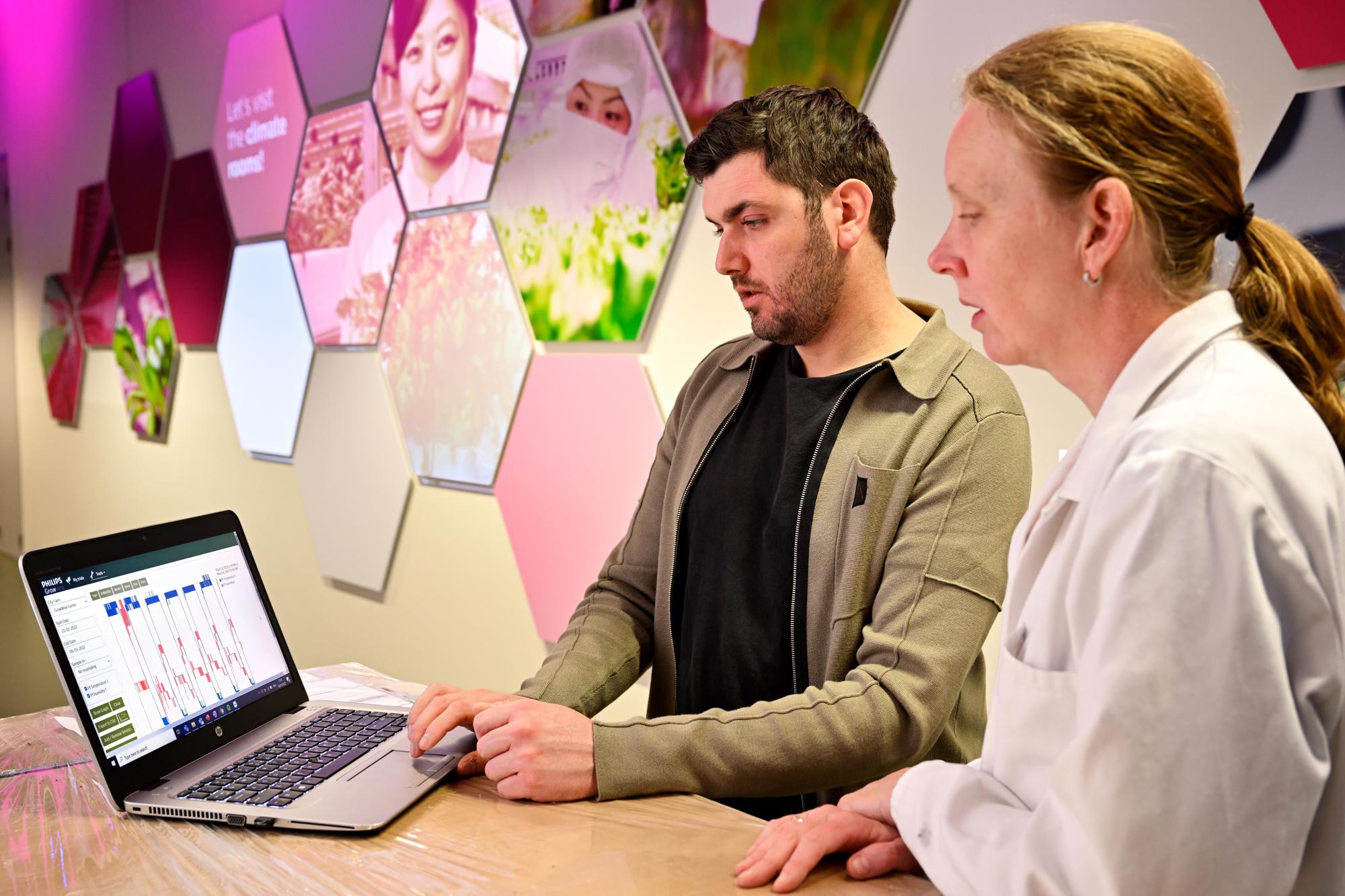
In the climate chambers, researchers have a range of settings at their disposal to determine the ideal growth conditions. The sensors provide specific data for this purpose. GrowWise then determines the correct temperature, soil composition, amount of water, nutrition and lighting based on that information. “A combination of artificial intelligence and configurable algorithms allows us to test the effect that changes in lighting have on the growth of fresh produce, such as a head of lettuce," says Ellis Janssen. “The resulting “dosage” is the ultimate lighting recipe in which we define how long the lights remain lit, and the intensity and colour of the LEDs.”
In a slightly broader context, Signify defines ‘growth recipes’. Those recipes specify the ideal mix of light, climate, irrigation, substrate and seed. The company has already helped over a thousand entrepreneurs and pioneers worldwide to set up commercial-scale businesses that use light recipes developed by Signify.
“When we get involved in these projects, we analyse all the aspects of the grower's business case first”, says Janssen. “Does the grower want to be able to reliably supply produce to retailers all year round? Or supply produce of a consistently high quality to local restaurants or caterers? We believe in vertical farming, but we know from experience that it is far from easy. So we focus on giving good advice, based on our wealth of practical experience with climate types, irrigation profiles, sensors, crops and measurements.
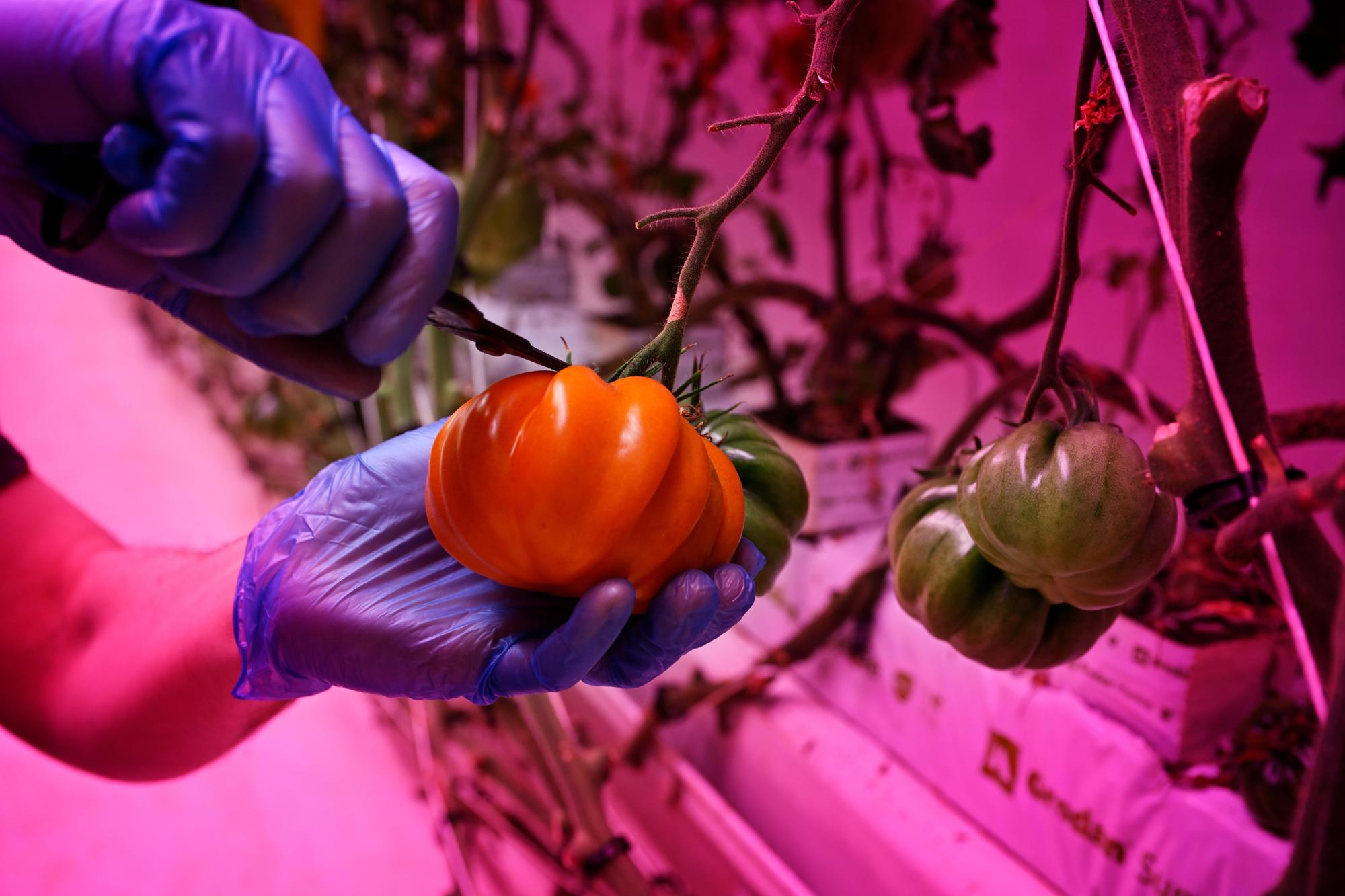
Vertical farming is also suitable for the accelerated development of new seed varieties or improved yields. A great deal of specialist knowledge is needed to get good results. In addition to plant specialists, experts from the horticultural sector and students are also involved in cultivation optimisation.
Knowledge institutions, businesses and government agencies have set up fruitful partnership programmes in this area. “The diversity of the different work cultures in Brabant has a positive influence on the innovation process,” says Janssen. “We find it easy to make contact with other companies here, to discuss whether their speciality can contribute in any way. We also work intensively with Eindhoven University of Technology, in the field of artificial intelligence for example.”
Vertical farming is not just about technology and data; knowledge of cultivation is particularly important. “Here again, Brabant has proven to be a perfect location," says Janssen. “HAS University of Applied Sciences in 's-Hertogenbosch is another strong partner for us. Not only for trainees, but also for joint programmes to investigate how we can improve cultivation. Today's HAS students are the growers of the future, so their views and input are important."
Back to the tomatoes. There are many places in the world where locally grown tomatoes are not available all year round, due to adverse climate conditions or other factors. This is the case, for example, in the Middle East, where vertical farming saves an enormous amount of water. Thanks to cultivation close to the customer, shops in these cities can deliver super-fresh tomatoes, lettuce or herbs.
Creating the right environment also makes it possible to actively adjust certain properties of the tomatoes, such as the sugar content, acidity, vitamins and other components. With a properly designed lighting strategy, growers can respond directly to local preferences in terms of taste and nutritional value.
Consumers in the Middle East, Asia and the United States can also look forward to great things in the future, thanks to the growth recipes from Brabant. With the help of green fingers, high tech and sophisticated lighting, they may soon be eating deliciously flavoursome produce from their own local, closed cultivation chambers.
You can copy the full text of this story for free at the touch of a button